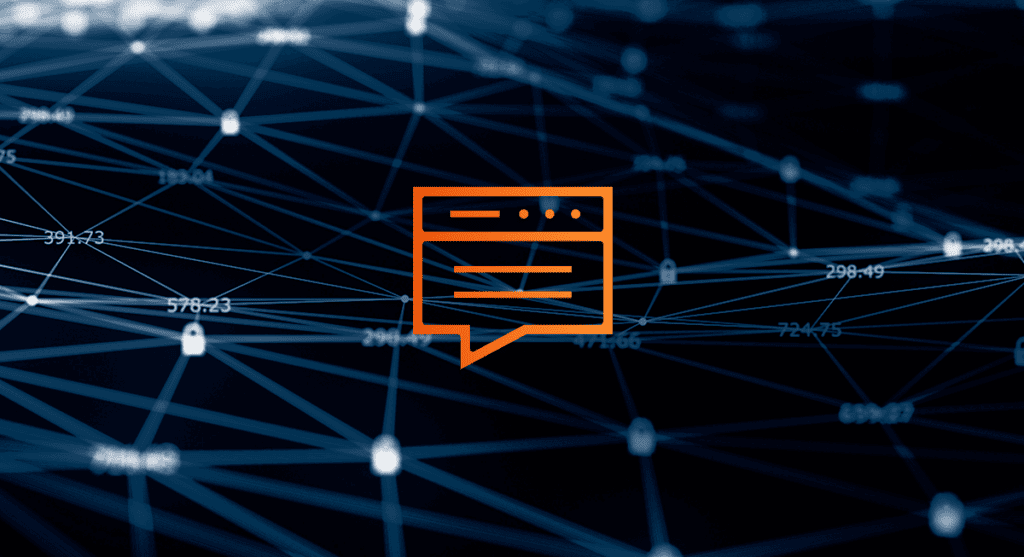What is Threat Intelligence?
Threat intelligence, also referred to as cyber threat intelligence (CTI), is evidence-based data that’s been collected from a variety of sources, processed, and analyzed to help both organizations and individuals understand recent cyber attacks as well as threat actors’ motivations, tactics, behaviors, and potential next steps.
Threat intelligence is valuable for security and IT teams as they work to detect and respond to threats in their own environments, as well as when those teams work to prioritize and implement proactive security measures. Threat intelligence can include indicators of compromise (IOCs), threat actor group capabilities, recently deployed malware strains, attack patterns such as initial access methods or applications targeted, broad threat trends, and more.
There are three main types of threat intelligence used by security teams and researchers.
1. Tactical threat intelligence. Tactical threat intelligence is focused on active threats and is geared toward a more technical audience, such as internal IT departments and security teams looking to detect and respond to more immediate threats in their environments. This intelligence is both actionable and is focused on near-term, specific threats an organization may face.
Examples of tactical threat intelligence include indicators of compromise (IOCs) such as malicious domain names, IP addresses, and hash files.
2. Operational threat intelligence. This threat intelligence is less technical and more broadly applicable than tactical threat intelligence and is focused on threat actor behaviors and motives. It seeks to identify attack vectors and patterns of behavior and is frequently used by security teams to both monitor their environments for attack precursors as well as implement security posture hardening measures. The actionability and usefulness of operational threat intelligence will vary organization by organization, as security teams contextualize and prioritize the data for their specific environments and risk profiles differently depending on their environment, risk profile, and goals.
Examples of operational threat intelligence include vulnerabilities that have been recently exploited in the wild, profiles of ransomware groups, and recent tactics, techniques, and procedures (TTPs) of known threat actors.
3. Strategic threat intelligence. Strategic threat intelligence focuses on broad cybercrime trends and is most applicable to a non-technical audience. Strategic threat intelligence is commonly used at the executive level to make decisions about an organization’s overall security investment and strategy.
Examples of strategic threat intelligence include current costs of cyber attacks for a given geographic region, timeframe, or industry, broad security and threat assessments, and emerging adversaries.
In practice, the three types of threat intelligence are used in tandem as organizations make proactive and reactive cybersecurity decisions while working to minimize threats. Threat intelligence can be found from many sources as well, such as cybersecurity community forums, within organizations’ security logs through researchers who share information as it becomes available, as well as paid subscriptions from specific providers.
Threat intelligence is often gathered into feeds, which deliver real-time data to security teams, organizations, and individuals. These feeds are often focused on specific areas of threat intelligence, such as new malware strains or new IOCs, and often aggregate data from several sources. These feeds exist in both open-source and privatized, paid form. While these feeds provide valuable data, they hold the most value when they’re integrated into security tools and platforms. When integrated, security tools can be augmented to alert on and detect new and emerging threats based on data provided by threat intelligence sources.
For example, by integrating threat intelligence that covers IOCs into your detection and response platform, your organization can (usually through automation) create rule sets to detect those new IOCs. Threat intelligence can update block / allow lists for your security tools and appliances, such as endpoint detection and response (EDR) and firewalls.
In conjunction with a vulnerability management solution, you can integrate new vulnerability information or newly listed CVEs, helping your organization better prioritize patching. Additionally, strategic threat intelligence can help security teams prioritize certain telemetry sources based on the current threat environment, implement posture hardening measures that are tied to specific intelligence reports, or invest in certain solutions, such as detection and response offerings.
Learn how Arctic Wolf Threat Intelligence delivers the most current data on emerging threats to organizations worldwide.
Threat Intelligence and Dark Web Monitoring
Exploring and monitoring the dark web is one of the many ways security teams and researchers obtain threat intelligence, as the dark web is where threat actors communicate, release exfiltrated data, and operationalize their activities, such as ransomware-as-service (RaaS). By diving into the underground forums, marketplaces, and sites on the dark web, threat researchers can gain valuable information on recent cyber attacks that have occurred, what vulnerability exploits threat actors have discovered and may be deploying, what data has been exfiltrated during recent attacks, and more information on threat actors motivations, behaviors, and plans.
Benefits for organizations utilizing the dark web for threat intelligence include:
- Potential for earlier threat detection based on current threat actor behavior
- Better risk mitigation against popular tactics, vulnerability exploits, and other TTPs used by and discussed by threat actors on the dark web
- More effective incident response, as dark web forums can provide insight for IR teams into if and how much data was exfiltrated, the scope of an attack, and more
- Ability to implement stronger proactive cybersecurity enhancements, as the dark web offers insight into threat actor trends
The Threat Intelligence Lifecycle
Moving from raw, unfiltered threat data into actionable threat intelligence insights follows a steady lifecycle, consisting of six stages.
Those stages are:
1. Direction/requirements: Set data requirements
2. Collection: Gather data as needed
3. Processing: Clean and format for analysis. This includes adding other insights or context
4. Analysis: Refine and analyze data into actionable threat intelligence reports
5. Action: Distribute and act upon threat intelligence reports and modify operations as needed
6. Feedback: Assess and refine threat intelligence gathering process for future use
These stages work in parallel and repeat continuously as new data appears. Data requirements may change based on what data is gathered, and new data may be required as current data is analyzed. Because threat actors are always adapting, new threat intelligence is constantly required for organizations to stay one step ahead, and the types of threat intelligence gathered can serve different purposes at different times, from responding to an imminent threat to making proactive investments in new security tools. The lifecycle, and how the raw data is approached, also depends on what an organization needs to learn based on their security goals and risk profile.
Benefits of Threat Intelligence in Cybersecurity
Without threat intelligence, organizations would struggle to protect themselves against imminent threats or understand how threats are changing and what defenses are needed. It’s threat intelligence that tells organizations how ransomware is evolving, which ransomware groups are most active, how common phishing is for certain industries, and why threat actors are targeting credentials across industries at an alarming rate.
On a more technical level, threat intelligence enables security teams to set rules in their detection and response tools, create alerts for certain IOCs, remediate the most pressing vulnerabilities, respond to incidents faster, and stay one step ahead of threat actors who may be working to access their environment.
Benefits of utilizing threat intelligence can include:
- Collaboration and knowledge sharing among organizations and security researchers
- Reduced cyber risk for organizations
- Enhanced cybersecurity efficiencies
- Deeper analysis of specific events and wider trends
- Better decision making from organizations’ internal teams, from security teams responding to threats to executives dictating broader security strategies
Explore how threat intelligence fuels the Arctic Wolf Security Operations Center (SOC), creating enhanced protection and early detections for thousands of organizations.
By utilizing the necessary threat intelligence types and sources, organizations are able to tailor their security efforts in ways that best serve their business and security needs while disrupting current threat patterns. By understanding the most pertinent threats and being able to more quickly respond to these threats, organizations can better direct budget, resources, and technology, and better respond to as well as avoid potential cyber incidents.
Arctic Wolf and Threat Intelligence
While threat intelligence offers immense value for organizations, the large amount of threat intelligence that can be observed and consumed compounds the already difficult challenge of staying on top of current threats. Arctic Wolf® Threat Intelligence enables organizations to leverage the same intelligence that powers the Arctic Wolf SOC , delivering the most current data on emerging threats. With curated reporting and real-time threat campaign notifications, businesses can stay informed without needing to sift through vast amounts of information.
Additionally, threat intelligence is critical to every aspect of Arctic Wolf’s industry-leading security operations. From guiding organizations through risk-based vulnerability management to helping organizations monitor their environment and detect and respond to urgent threats, every decision made by the Arctic Wolf Security Teams is backed by threat intelligence drawn not only from the broader security community, but an immense dataset of over seven trillion security observations per week across more than 7,000 customers.
Learn more about Arctic Wolf Threat Intelligence.
See the latest trends and insights from the world of cybercrime with the Arctic Wolf 2024 Security Operations Report.






